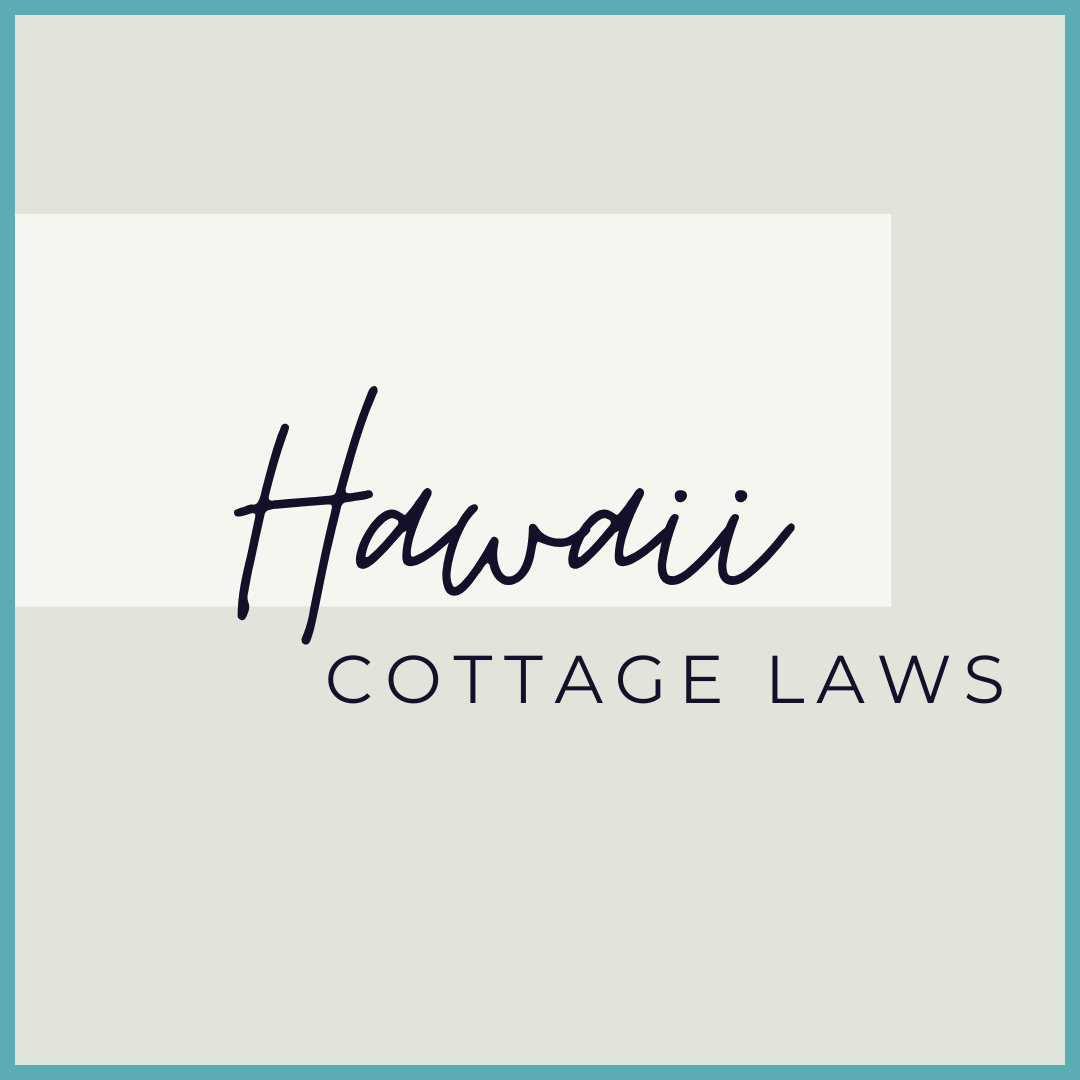Hawaii Cottage Laws
Aloha to cottage food opportunities in the beautiful Hawaiian Islands!
Welcome to Hawaii, where the spirit of aloha extends to cottage food laws that are finally opening doors for home-based food entrepreneurs! While Hawaii was one of the last states to adopt cottage food regulations, the islands now offer real opportunities for turning your culinary talents into income. With exciting new changes in 2024 that expand sales opportunities, Hawaii's cottage food scene is heating up faster than a luau pit. This guide will walk you through everything you need to know to start your legal home food business in paradise.
Exciting 2024 Changes: The Game-Changer
The 2024 legislation brings transformative changes that make Hawaii much more entrepreneur-friendly:
New Sales Channels Allowed:
- Online sales – finally allowed!
- Telephone orders – phone-based sales permitted
- Third-party sales – partner with coffee shops and retailers
- Inter-island shipping – mail products between islands
Expanded Food Categories:
- Pickled foods – previously prohibited
- Fermented foods – like kimchi and fermented vegetables
- Acidified foods – jams, chutneys, and preserves
- Additional preserves – broader range of preserved products
Streamlined Operations:
- Clearer labeling requirements
- More flexibility in business operations
- Better support for small-scale food entrepreneurs
What Foods Can You Make and Sell?
Hawaii allows “not potentially hazardous” foods – items that don't require time or temperature control for safety.
Traditional Allowed Foods:
Baked Goods:
- Bagels, biscuits, and breads
- Brownies, cakes, and cookies
- Donuts, muffins, and rolls
- Scones, sweet breads, and tortillas
- Pastries and baked treats
Confections and Snacks:
- Candies and chocolates
- Popcorn and nuts
- Granola and trail mixes
- Dried fruits and vegetables
- Nut butters and spreads
Preserved Foods:
- Traditional jams and jellies
- Honey and syrups
- Vinegars and oils
- Dried herbs and spices
- Coffee beans and tea
Hawaiian Specialties:
- Hand-pounded poi (specifically allowed in Hawaii's rules!)
- Traditional Hawaiian baked goods
- Island-style snacks and treats
New 2024 Additions:
- Pickled vegetables (including pickled mangoes!)
- Fermented foods like kimchi
- Acidified preserves and chutneys
- Expanded jam and jelly varieties
What You CANNOT Make:
- Time/temperature controlled foods requiring refrigeration
- Fresh dairy products (milk, cheese, yogurt)
- Meat and seafood products (including dried meats)
- Low-acid canned foods
- Garlic in oil preparations
- Fresh cut fruits and vegetables
Special Note on Ingredients:
You can use eggs, milk, and dairy as ingredients in your allowed baked goods, even though you can't sell these items directly.
How to Get Started: Step-by-Step Guide
Getting started with Hawaii cottage food is simpler than ever, especially with the 2024 improvements.
Step 1: Complete Food Safety Training
Hawaii requires food safety education before you can sell. You have two options:
Option 1: Free DOH Workshops
- Attend a Food Safety Education Workshop on your island
- Offered by Hawaii Department of Health
- No cost but limited scheduling and locations
Option 2: ANSI-Accredited Online Course
- Complete an online course (like FoodSafePal or Learn2Serve)
- Cost: $10-15 typically
- Takes 2-3 hours to complete
- Valid for 3 years
Step 2: Set Up Your Home Kitchen
- Use your primary residence kitchen only
- No commercial kitchens allowed under cottage food rules
- Maintain good sanitation practices
- Ensure proper storage for ingredients and finished products
Step 3: Create Proper Labels
Hawaii has specific labeling requirements that must be followed exactly:
Required Label Information:
- Product name (common or usual name)
- Ingredient list in descending order by weight
- Allergen information per federal requirements
- Contact information (business address, email, or phone – PO boxes allowed)
- Two required statements in at least 10-point font:
- “This food product is home-produced and processed”
- “This food product was not produced or packaged in a Department of Health-inspected facility”
Step 4: Choose Your Sales Strategy
With 2024 changes, you now have multiple options:
Direct Sales:
- From your home
- At farmers markets and events
- Roadside stands
- Home delivery and pickup
New 2024 Options:
- Online sales and orders
- Phone-based sales
- Third-party partnerships (coffee shops, stores)
- Inter-island shipping
Step 5: Start Selling!
No permits or licenses required – just complete training, label properly, and begin selling!
Where and How Can You Sell?
Traditional Sales Venues:
- Your home – direct sales to customers
- Farmers markets – popular venues throughout the islands
- Special events – craft fairs, festivals, fundraisers
- Roadside stands – especially popular in rural areas
- Bake sales – school and community fundraisers
New 2024 Opportunities:
- Online platforms – create websites or use social media
- Third-party retailers – partner with local coffee shops and stores
- Telephone orders – take orders by phone
- Inter-island sales – ship to other Hawaiian islands
- Consignment arrangements – work with local businesses
Geographic Restrictions:
- Hawaii only – cannot ship to mainland or other states
- Inter-island shipping now allowed (2024 improvement)
- All sales must ultimately be to end consumers
Income Potential: No Sales Limit!
Unlimited Earning Potential:
One of Hawaii's best features is no annual sales cap. Unlike states that limit cottage food earnings to $25,000-$50,000, Hawaii allows unlimited income from cottage food sales.
Business Growth Opportunities:
- Start with direct sales and farmers markets
- Expand to online sales (new in 2024)
- Develop third-party partnerships (new in 2024)
- Scale to significant income levels
- Consider inter-island distribution
Island-Specific Advantages:
- Tourism market – visitors love local specialties
- Inter-island shipping – serve multiple islands from one kitchen
- Unique Hawaiian products – poi, tropical preserves, island treats
- Year-round growing season – fresh ingredients always available
Special Considerations for Hawaii
Island-Specific Challenges:
- Limited commercial kitchen access – especially in rural areas
- High ingredient costs – shipping to islands increases prices
- Distance between islands – requires shipping for inter-island sales
- Tourist vs. local markets – different customer bases and needs
Advantages of Island Life:
- Strong local food movement – consumers value local products
- Unique Hawaiian ingredients – access to tropical fruits and specialties
- Tourist interest – visitors seek authentic Hawaiian food experiences
- Community support – island communities often support local businesses
Regulatory Environment:
- No routine inspections – but DOH can investigate complaints
- State-level regulation – consistent rules across all islands
- Growing support – recent legislation shows government backing
Food Safety Best Practices
While Hawaii doesn't require permits or regular inspections, following good practices protects your business:
Kitchen Safety:
- Maintain clean work surfaces and equipment
- Wash hands frequently during food preparation
- Store ingredients properly to prevent contamination
- Keep pets away from food preparation areas
Hawaiian Climate Considerations:
- High humidity – store dry goods in airtight containers
- Tropical environment – extra attention to pest control
- Temperature fluctuations – proper storage becomes more critical
- Salt air exposure – protect ingredients from moisture
Customer Safety:
- Use quality, fresh ingredients
- Follow tested recipes consistently
- Label products clearly with allergen information
- Respond promptly to any customer concerns
Making the Most of Hawaii's Unique Market
Embrace Local Flavors:
- Tropical fruits – mango, passion fruit, guava preserves
- Hawaiian specialties – poi, haupia-flavored treats
- Island fusion – combine local and international flavors
- Seasonal specialties – highlight different harvest seasons
Target Multiple Markets:
- Local residents – focus on convenience and regular customers
- Tourists – emphasize authentic Hawaiian experiences
- Special events – luaus, weddings, cultural celebrations
- Corporate clients – hotels, restaurants seeking local products
Leverage 2024 Improvements:
- Develop online presence – now legally allowed
- Partner with local businesses – coffee shops, gift stores
- Expand to other islands – use shipping for broader reach
- Create subscription services – regular delivery of specialties
Getting Help and Resources
Official Resources:
- Hawaii Department of Health: health.hawaii.gov/san/
- Food Safety Branch: For regulations and guidance
- Environmental Health Offices by Island:
- Hawaii Island: (808) 933-0917 (Hilo), (808) 322-1507 (Kona)
- Maui: (808) 984-8230
- Kauai: (808) 241-3323
Training Resources:
- Hawaii DOH Food Safety Workshops: Free but limited availability
- ANSI-Accredited Online Courses: FoodSafePal, Learn2Serve, ServSafe
Business Support:
- Small Business Development Centers: Business planning assistance
- Local farmers markets: Networking and customer development
- Hawaii Tropical Fruit Growers: Support for fruit-based products
- Food innovation centers: Maui Food Innovation Center, Wahiawa Value-Added Product Development Center
Looking Ahead: Hawaii's Cottage Food Future
Continued Growth Expected:
The Institute for Justice gave Hawaii a C grade (43rd out of 69) for cottage food laws, but the 2024 improvements show positive momentum. As Meagan Forbes from the Institute noted: “I think they wanted to take an incremental approach, slow and steady, to expand it a bit first to see how that goes and then in a couple of years look again and consider expanding it further.”
Potential Future Improvements:
- Further expansion of allowed foods
- Mainland shipping permissions
- Additional sales venue options
- Streamlined training requirements
Ready to Start Your Hawaii Cottage Food Adventure?
Hawaii's cottage food laws have transformed from restrictive to promising, especially with the 2024 improvements. The combination of no sales limits, beautiful local ingredients, strong community support, and new sales opportunities makes Hawaii an increasingly attractive place for cottage food entrepreneurs.
Hawaii's Key Advantages:
- No annual sales limit – unlimited earning potential
- 2024 expansions – online sales, third-party partnerships, expanded foods
- Unique Hawaiian products – poi, tropical preserves, island specialties
- Tourist and local markets – diverse customer base
- Inter-island opportunities – serve multiple islands
- Strong local food movement – community support for homemade products
Your Action Plan:
- Complete food safety training (online or in-person)
- Identify your specialty products using local Hawaiian flavors
- Set up your home kitchen with proper sanitation
- Create compliant labels with required statements
- Choose your sales strategy – farmers markets, online, or partnerships
- Start with local sales then expand to other islands
- Build relationships with local businesses and customers
The Aloha Advantage: Hawaii offers something special for cottage food entrepreneurs – the opportunity to create authentic island products in a supportive community environment. Whether it's hand-pounded poi, tropical fruit preserves, or innovative fusion treats, Hawaii welcomes your cottage food dreams with the spirit of aloha and increasingly favorable laws.
From Kauai to the Big Island, from traditional Hawaiian treats to innovative fusion creations – Hawaii's cottage food opportunities are as beautiful and diverse as the islands themselves.
E komo mai (welcome) to your Hawaiian cottage food journey!
Disclaimer: This information reflects Hawaii's cottage food laws as of 2024-2025, including recent improvements from House Bill 2144. Always verify current requirements with the Hawaii Department of Health and check for any additional local regulations. Laws can change, and individual circumstances may vary. For the most current information, visit health.hawaii.gov/san/ or contact your local Environmental Health office.






